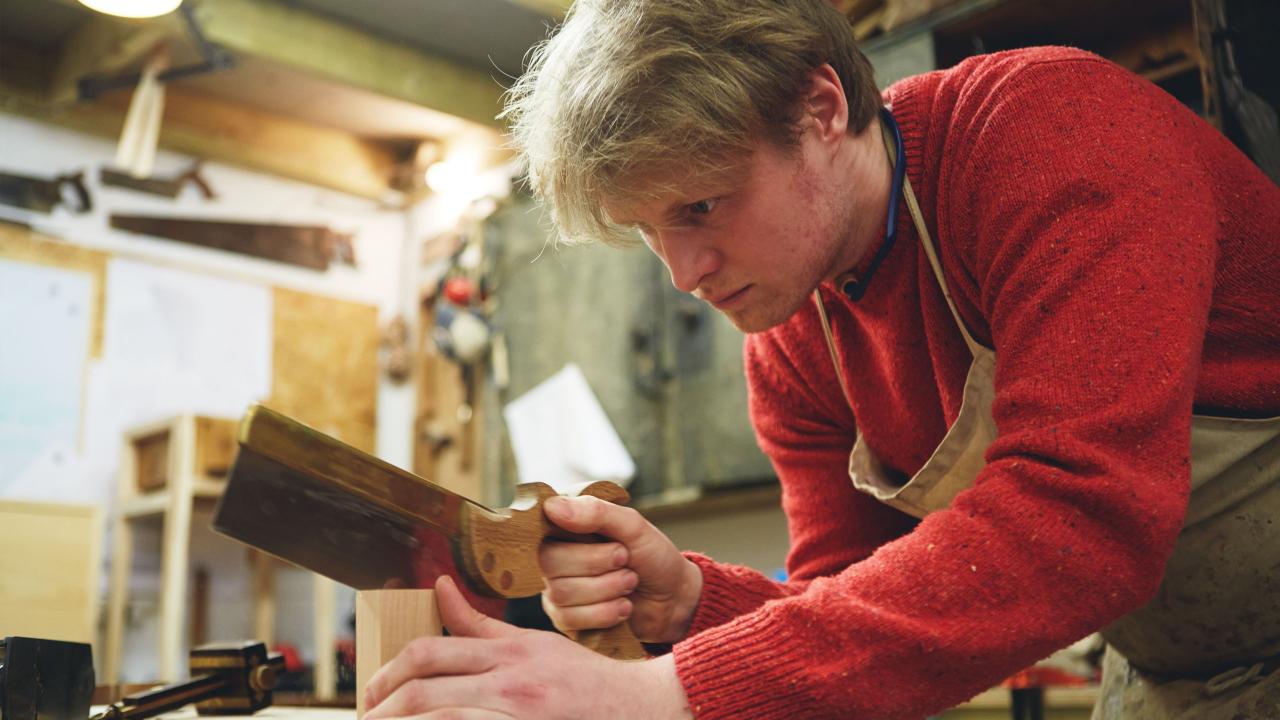DeSIGN PROCESS
Laura Ellen Bacon is a sculptor. Sebastian Cox is a furniture designer. Laura sketches in 6B pencil. Sebastian uses a 2H, or a computer. For Laura, the form and scale of a piece dictate the material. Sebastian designs objects that make best use of his material. Laura’s creative process starts with the space she’s designing for. Sebastian rarely knows where his work will end up. Laura works with her hands, often using willow because of how it feels in her fingers. Sebastian uses machines, and even when he’s making by hand there’s a tool between his hands and the wood.
What these two very different designers do have in common is a love of wood, and a love of making. 'Every maker derives such a lot of joy from the making process,' says Laura. 'That shows in your work – it has a fullness to it. Everything you make has an invisible store of happiness hidden inside it. We poured over ideas for months, but in the end that’s what it came down to.' So the seed for the Invisible Store of Happiness was sown.
Working together to turn that seed of an idea into three-dimensional form has tested them, challenged them, driven them. But the design process has always come back to a love of making things out of wood.
'To work with Laura, I needed to reduce the material from great lumps of hardwood to something that could be woven,' said Sebastian. 'The obvious way would have been to cut it into strips, but I wanted to do something more interesting, more efficient, more beautiful.' Using a spindle-moulder and a series of cutters, straight lengths of maple are partially split into ribbons, which are then soaked in water overnight creating something more akin to the willow Laura is used to working with. 'Kiln dried American hardwood is usually used for flooring or furniture, it’s a very solid thing, so we’re reimagining how it can be used,' says Sebastian.

